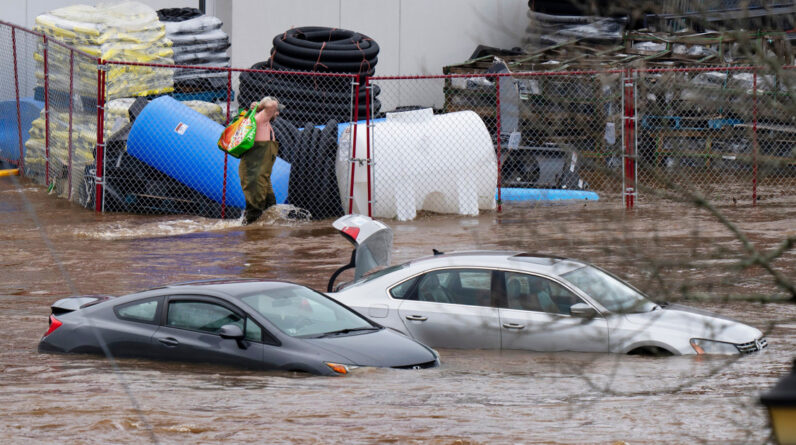
HALIFAX, Nova Scotia – Four people are missing after intense storms dumped record amounts of rain on much of the province of Nova Scotia on Canada’s Atlantic coast over the past two days, causing flash flooding, road closures and power outages.
Flooding submerged several vehicles, and RCMP spokeswoman Cindy Bayers said two such incidents in West Hants, north of Halifax, had left two adults and two children missing Saturday morning.
The two children went missing after the vehicle they were traveling in became trapped underwater, Bayers said, noting that the other three occupants were able to escape safely.
Two other people, who Bayers described as a youth and a man, remain unidentified after a separate vehicle submersion. Two other people in that vehicle were rescued, he said, adding that police are actively searching for the four missing people.
Torrential downpours began Friday afternoon in the Halifax region, dumping more than 200 millimeters of rain in some areas. The port city typically receives around 90-100mm of rain during an average July.
Based on radar estimates and unofficial observations, Environment Canada said Saturday that some areas may have received more than 300 mm in 24 hours. Radar maps show the heaviest rain extending along the southwest coast of the province to a point north of Halifax.
Widespread flooding was also reported in Lunenberg County, which is west of the Halifax region.
On Friday night, water levels rose so quickly in the Bedford area that Halifax Search and Rescue volunteers were using small boats to rescue people from flooded homes.
In the Hammonds Plains area, north-west of the city, flooding washed away the carriageways and shoulders of many roads.
It is the same area where 151 homes and businesses were destroyed by a forest fire that started on May 28 and forced the evacuation of 16,000 inhabitants. And for much of the past week, the Halifax area has suffered under a still dome of moisture, a rare occurrence so close to the coast.
It was only last fall that Post-Tropical Storm Fiona made landfall in the Atlantic region, killing three people, flattening dozens of homes and knocking out power to more than 600,000 homes and businesses. Fiona was the costliest weather event in the region’s history, causing more than C$800 million ($604 million) in insured damage.
“It’s pretty obvious that the weather is changing, from Fiona last year to the wildfires in the spring and now the flooding in the summer,” Halifax Mayor Mike Savage said.
“We’re getting storms that used to be considered one-in-50-year events … quite regularly,” he added.
Although official statistics have not yet been recorded, it is believed that the Halifax region has not seen this level of rainfall since August 16, 1971, when Hurricane Beth made landfall near the eastern tip of mainland Nova Scotia and then roared over Cape Breton. At the time, almost 250 mm of rain fell in the Halifax area, causing widespread flooding and damage.
[ad_2]
Source link





